Digital Experiential Learning for Sustainable Horticulture and Landscape Management Education
Abstract
:1. Introduction
2. Literature Review
2.1. Affordances of Immersive Technology in Higher Education
2.2. Kolb’s Experiential Learning Theory
- Concrete Experience (CE): Students participate in tasks where they get hands-on experiences from problem-solving without prejudices or bias.
- Reflective Observation (RO): Direct experiences gained by doing in the CE stage do not automatically become new knowledge. Students must observe and review their experiences introspectively. Through conscious reflections, they make meanings from the experiences.
- Abstract Conceptualisation (AC): Students resolve conflicts and tensions by integrating their observations and reflections on the new experience with their pre-existing beliefs and knowledge. They generalise knowledge from previous experiences and develop new concepts and theories in this stage.
- Active Experimentation (AE): Students plan and carry out experimental activities to test and validate the newly formed concepts and theories. The experimentation feedbacks new experiences and thus starts another experiential learning cycle.
3. Materials and Methods
3.1. Sustainable Experiential Learning in Horticulture Landscape Management
3.2. Research Methodology
4. Results
4.1. Descriptive Statistics
4.2. Ordinary Least Squares Regression Models
5. Discussion
6. Conclusions
Author Contributions
Funding
Institutional Review Board Statement
Informed Consent Statement
Data Availability Statement
Conflicts of Interest
Appendix A
| Please Answer These Questions | |||||
|---|---|---|---|---|---|
| Strongly Disagree | Disagree | Neither Agree Nor Disagree | Agree | Strongly Agree | |
| 1. ARVR offers authentic learning experience to the understanding of the subject. | □ | □ | □ | □ | □ |
| 2. I can gain same authentic learning experience to the understanding of the subject in traditional learning. | □ | □ | □ | □ | □ |
| 3. ARVR makes me feel like the real tree felling/pruning/trimming. | □ | □ | □ | □ | □ |
| 4. I can have same experience of real tree felling/pruning/trimming in traditional learning. | □ | □ | □ | □ | □ |
| 5. ARVR allows me to apply learnt theory into practice. | □ | □ | □ | □ | □ |
| 6. I can apply learnt theory into practice in traditional learning. | □ | □ | □ | □ | □ |
| 7. ARVR smoothly acts as I planned the activities. | □ | □ | □ | □ | □ |
| 8. I can plan my activities in real life as in ARVR smoothly. | □ | □ | □ | □ | □ |
| 9. ARVR allows me to retry and test out my assumption easily. | □ | □ | □ | □ | □ |
| 10. I can retry and test out assumption in real life as in ARVR easily. | □ | □ | □ | □ | □ |
| 11. The conceptualization of the landscape theory can be applied to the ARVR. | □ | □ | □ | □ | □ |
| 12. I can apply the conceptualization of the landscape theory to real life easily with traditional learning. | □ | □ | □ | □ | □ |
| 13. After the operation of the VR, I have deeper understanding of the landscape theory learnt on paper. | □ | □ | □ | □ | □ |
| 14. I can have deep understanding of the landscape theory by simply reading from paper. | □ | □ | □ | □ | □ |
| 15. I have gained experience from operation of ARVR and feel more confident to solve real-life problems. | □ | □ | □ | □ | □ |
| 16. I can gain same experience from traditional learning and feel confident to solve real-life problems. | □ | □ | □ | □ | □ |
| 17. Aside from the operation of the AR, the activity allows me to think critically. | □ | □ | □ | □ | □ |
| 18. I am able to have same level of critical thinking with traditional learning. | □ | □ | □ | □ | □ |
| 19. ARVR encourages more frequent reflective thinking, as I can redo, revise, and review my progress with no constraints of time/space/venue etc. | □ | □ | □ | □ | □ |
| 20. I am able to have reflective thinking, redo, revise and review my progress without any constraint easily in traditional learning. | □ | □ | □ | □ | □ |
| 21. ARVR allows my peers to observe my action and make peer review judgements and I can learn from each other. | □ | □ | □ | □ | □ |
| 22. My peers can observe my action and make peer review easily in traditional learning. | □ | □ | □ | □ | □ |
| 23. ARVR offers a cost-effective method to mimic real life tree felling, which is an efficient method used for future learning during pandemic. | □ | □ | □ | □ | □ |
| 24. Traditional field trips are costly and hard to organize during pandemic. | □ | □ | □ | □ | □ |
| 25. ARVR provides a sustainable method of learning and teaching during pandemic. | □ | □ | □ | □ | □ |
| 26. ARVR is cost-effective means to develop teaching and learning materials. | □ | □ | □ | □ | □ |
| 27. ARVR has high demand on IT support and equipment requirements. | □ | □ | □ | □ | □ |
Appendix B
| Stage/Attributes | Traditional Learning | ARVR Learning |
|---|---|---|
| Concrete Experience (CE) | ||
| Authentic learning process | Question 2 | Question 1 |
| Real hands-on experience | Question 4 | Question 3 |
| Cost-effective substitution during pandemic | Question 24 | Question 23 |
| Active Experimentation (AE) | ||
| Able to apply theory to practice | Question 6 | Question 5 |
| Planned activities | Question 8 | Question 7 |
| Easy to retry and test | Question 10 | Question 9 |
| Abstract Conceptualisation (AC) | ||
| Generated own conceptual theory to apply to reality | Question 12 | Question 11 |
| Deepened understanding of theory learnt on paper | Question 14 | Question 13 |
| Experience gained for solving real-life problems | Question 16 | Question 15 |
| Reflective Observation (RO) | ||
| Boosted critical thinking | Question 18 | Question 17 |
| Flexible reflective process | Question 20 | Question 19 |
| Convenient peer review | Question 22 | Question 21 |
References
- Cahapay, M.B. Rethinking Education in the New Normal Post-COVID-19 Era: A Curriculum Studies Perspective. Aquademia 2020, 4, ep20018. [Google Scholar] [CrossRef]
- Lee, H.; Hwang, Y. Technology-Enhanced Education through VR-Making and Metaverse-Linking to Foster Teacher Readiness and Sustainable Learning. Sustainability 2022, 14, 4786. [Google Scholar] [CrossRef]
- Butler, M. Interdisciplinary experiential learning during COVID-19: Lessons learned and reflections for the future. J. Environ. Stud. Sci. 2022, 12, 369–377. [Google Scholar] [CrossRef] [PubMed]
- Cridland, C.; Drape, T.; Marine, S.; Gillaspy, G. Ten best practices for taking experiential learning online. Biochem. Mol. Biol. Educ. 2020, 49, 9–14. [Google Scholar] [CrossRef]
- Markel, J.M.; Guo, P.J. Designing the Future of Experiential Learning Environments for a Post-COVID World: A Preliminary Case Study. Available online: https://www.microsoft.com/en-us/research/publication/designing-the-future-of-experiential-learning-environments-for-a-post-covid-world-a-preliminary-case-study/ (accessed on 9 June 2022).
- Fonseca, D.; Kompen, R.T.; Labrador, E.; Villegas, E.; Jakobs, K.; García-Peñalvo, F.J. Technology-Enhanced Learning: Good Educational Practices. In Global Implications of Emerging Technology Trends; Gar-cía-Peñalvo, F.J., Ed.; IGI Global: Hershey, PA, USA, 2018; pp. 93–114. [Google Scholar] [CrossRef] [Green Version]
- Attallah, B. Post COVID-19 Higher Education Empowered by Virtual Worlds and Applications. In Proceedings of the 2020 Seventh International Conference on Information Technology Trends (ITT), Abu Dhabi, United Arab Emirates, 25–26 November 2020; pp. 161–164. [Google Scholar] [CrossRef]
- Dumford, A.D.; Miller, A.L. Online learning in higher education: Exploring advantages and disadvantages for engagement. J. Comput. High. Educ. 2018, 30, 452–465. [Google Scholar] [CrossRef]
- Wallace, R.M. Online Learning in Higher Education: A review of research on interactions among teachers and students. Educ. Commun. Inf. 2003, 3, 241–280. [Google Scholar] [CrossRef]
- Keengwe, J.; Kidd, T. Towards best practice in online learning and teaching in higher education. J. Online Learn. Teach. 2010, 6, 533–541. [Google Scholar]
- Kolb, D.A. Experiential Learning: Experience as the Source of Learning and Development, 2nd ed.; Pearson Education Inc.: Upper Saddle River, NJ, USA, 2015. [Google Scholar]
- Kobayashi, K.D.; Radovich, T.J.; Moreno, B.E. A Tropical Perspective on Environmental Sustainability in Horticultural Education. HortTechnology 2010, 20, 503–508. [Google Scholar] [CrossRef] [Green Version]
- Buck-Sorlin, G.; Delaire, M. Meeting present and future challenges in sustainable horticulture using virtual plants. Front. Plant Sci. 2013, 4, 443. [Google Scholar] [CrossRef] [Green Version]
- Renganayagalu, S.K.; Mallam, S.C.; Nazir, S. Effectiveness of VR Head Mounted Displays in Professional Training: A Systematic Review. Technol. Knowl. Learn. 2021, 26, 999–1041. [Google Scholar] [CrossRef]
- Atkins, T.; O’Hagan, R.; Rogers, W.; Pearson, M.; Cameron, E. Virtual reality in horticultural education: Pruning simulated fruit trees in a virtual environment. Acta Hortic. 1996, 416, 243–246. [Google Scholar] [CrossRef]
- Weber, J.; Penn, J. Creation and rendering of realistic trees. In Proceedings of the 22nd Annual Conference on Computer Graphics and Interactive Techniques, Los Angeles, CA, USA, 15 September 1995; pp. 119–128. [Google Scholar] [CrossRef] [Green Version]
- Wu, S.; Xiao, B.; Wen, W.; Guo, X. Virtual fruit tree pruning training system based on agent. Acta Hortic. 2019, 1261, 165–172. [Google Scholar] [CrossRef]
- Xia, N.; Li, A.-S.; Huang, D.-F. Virtual Apple Tree Pruning in Horticultural Education. In Learning by Playing. Game-Based Education System Design and Development; Springer: Berlin/Heidelberg, Germany, 2009; pp. 26–37. [Google Scholar] [CrossRef]
- Michaelsen, L.K.; Sweet, M. The essential elements of team-based learning. New Dir. Teach. Learn. 2008, 2008, 7–27. [Google Scholar] [CrossRef]
- Michaelsen, L.K.; Knight, A.B.; Fink, L.D. (Eds.) Team-Based Learning: A Transformative Use of Small Groups in College Teaching, 1st ed.; Stylus Publishing: Sterling, MI, USA, 2004. [Google Scholar]
- Thompson, B.M.; Haidet, P.; Borges, N.J.; Carchedi, L.R.; Roman, B.J.B.; Townsend, M.H.; Butler, A.P.; Swanson, D.B.; Anderson, M.P.; Levine, R. Team cohesiveness, team size and team performance in team-based learning teams. Med. Educ. 2015, 49, 379–385. [Google Scholar] [CrossRef]
- Gerup, J.; Soerensen, C.B.; Dieckmann, P. Augmented reality and mixed reality for healthcare education beyond surgery: An integrative review. Int. J. Med. Educ. 2020, 11, 1–18. [Google Scholar] [CrossRef] [Green Version]
- Guo, X.; Guo, Y.; Liu, Y. The Development of Extended Reality in Education: Inspiration from the Research Literature. Sustainability 2021, 13, 13776. [Google Scholar] [CrossRef]
- Maas, M.J.; Hughes, J.M. Virtual, augmented and mixed reality in K–12 education: A review of the literature. Technol. Pedagog. Educ. 2020, 29, 231–249. [Google Scholar] [CrossRef]
- Smith, E.; McRae, K.; Semple, G.; Welsh, H.; Evans, D.; Blackwell, P. Enhancing Vocational Training in the Post-COVID Era through Mobile Mixed Reality. Sustainability 2021, 13, 6144. [Google Scholar] [CrossRef]
- Bliss, J.P.; Tidwell, P.D.; Guest, M.A. The Effectiveness of Virtual Reality for Administering Spatial Navigation Training to Firefighters. Presence Teleoper. Virtual Environ. 1997, 6, 73–86. [Google Scholar] [CrossRef]
- Ota, D.; Loftin, B.; Saito, T.; Lea, R.; Keller, J. Virtual reality in surgical education. Comput. Biol. Med. 1995, 25, 127–137. [Google Scholar] [CrossRef]
- Fung, F.M.; Choo, W.Y.; Ardisara, A.; Zimmermann, C.D.; Watts, S.; Koscielniak, T.; Blanc, E.; Coumoul, X.; Dumke, R. Applying a Virtual Reality Platform in Environmental Chemistry Education To Conduct a Field Trip to an Overseas Site. J. Chem. Educ. 2019, 96, 382–386. [Google Scholar] [CrossRef] [Green Version]
- Johnson, M.T. The knowledge exchange framework: Understanding parameters and the capacity for transformative engagement. Stud. High. Educ. 2020, 47, 194–211. [Google Scholar] [CrossRef]
- Dalgarno, B.; Lee, M.J.W. What are the learning affordances of 3-D virtual environments? Br. J. Educ. Technol. 2009, 41, 10–32. [Google Scholar] [CrossRef]
- Allcoat, D.; von Mühlenen, A. Learning in virtual reality: Effects on performance, emotion and engagement. Res. Learn. Technol. 2018, 26, 2140. [Google Scholar] [CrossRef] [Green Version]
- Bos, A.S.; Herpich, F.; Kuhn, I.; Guarese, R.L.M.; Tarouco, L.M.R.; Zaro, M.A.; Pizzato, M.; Wives, L. Educational Technology and Its Contributions in Students’ Focus and Attention Regarding Augmented Reality Environments and the Use of Sensors. J. Educ. Comput. Res. 2019, 57, 1832–1848. [Google Scholar] [CrossRef]
- Pellas, N.; Fotaris, P.; Kazanidis, I.; Wells, D. Augmenting the learning experience in primary and secondary school education: A systematic review of recent trends in augmented reality game-based learning. Virtual Real. 2018, 23, 329–346. [Google Scholar] [CrossRef]
- Shi, A.; Wang, Y.; Ding, N. The effect of game–based immersive virtual reality learning environment on learning outcomes: Designing an intrinsic integrated educational game for pre–class learning. Interact. Learn. Environ. 2019, 30, 721–734. [Google Scholar] [CrossRef]
- Bouta, H.; Retalis, S.; Paraskeva, F. Utilising a collaborative macro-script to enhance student engagement: A mixed method study in a 3D virtual environment. Comput. Educ. 2012, 58, 501–517. [Google Scholar] [CrossRef]
- Nesenbergs, K.; Abolins, V.; Ormanis, J.; Mednis, A. Use of Augmented and Virtual Reality in Remote Higher Education: A Systematic Umbrella Review. Educ. Sci. 2020, 11, 8. [Google Scholar] [CrossRef]
- Hamilton, D.; McKechnie, J.; Edgerton, E.; Wilson, C. Immersive virtual reality as a pedagogical tool in education: A systematic literature review of quantitative learning outcomes and experimental design. J. Comput. Educ. 2020, 8, 1–32. [Google Scholar] [CrossRef]
- Domingo, J.R.; Bradley, E.G. Education Student Perceptions of Virtual Reality as a Learning Tool. J. Educ. Technol. Syst. 2017, 46, 329–342. [Google Scholar] [CrossRef]
- Jensen, L.; Konradsen, F. A review of the use of virtual reality head-mounted displays in education and training. Educ. Inf. Technol. 2018, 23, 1515–1529. [Google Scholar] [CrossRef] [Green Version]
- Krajčovič, M.; Gabajová, G.; Matys, M.; Grznár, P.; Dulina, L.; Kohár, R. 3D Interactive Learning Environment as a Tool for Knowledge Transfer and Retention. Sustainability 2021, 13, 7916. [Google Scholar] [CrossRef]
- Loke, S.-K. How do virtual world experiences bring about learning? A critical review of theories. Australas. J. Educ. Technol. 2015, 31, 112–122. [Google Scholar] [CrossRef] [Green Version]
- Kwon, C. Verification of the possibility and effectiveness of experiential learning using HMD-based immersive VR technologies. Virtual Real. 2018, 23, 101–118. [Google Scholar] [CrossRef] [Green Version]
- Kolb, A.Y.; Kolb, D.A. Learning Styles and Learning Spaces: Enhancing Experiential Learning in Higher Education. Acad. Manag. Learn. Educ. 2005, 4, 193–212. [Google Scholar] [CrossRef] [Green Version]
- Fowler, C. Virtual reality and learning: Where is the pedagogy? Br. J. Educ. Technol. 2014, 46, 412–422. [Google Scholar] [CrossRef]
- Mikropoulos, T.A.; Natsis, A. Educational virtual environments: A ten-year review of empirical research (1999–2009). Comput. Educ. 2011, 56, 769–780. [Google Scholar] [CrossRef]
- Radianti, J.; Majchrzak, T.A.; Fromm, J.; Wohlgenannt, I. A systematic review of immersive virtual reality applications for higher education: Design elements, lessons learned, and research agenda. Comput. Educ. 2019, 147, 103778. [Google Scholar] [CrossRef]
- Wang, F.; Burton, J.K. Second Life in education: A review of publications from its launch to 2011. Br. J. Educ. Technol. 2013, 44, 357–371. [Google Scholar] [CrossRef]
- Bossard, C.; Kermarrec, G.; Buche, C.; Tisseau, J. Transfer of learning in virtual environments: A new challenge? Virtual Real. 2008, 12, 151–161. [Google Scholar] [CrossRef]
- Abdulwahed, M.; Nagy, Z.K. Applying Kolb’s Experiential Learning Cycle for Laboratory Education. J. Eng. Educ. 2009, 98, 283–294. [Google Scholar] [CrossRef] [Green Version]
- Baxter, G.; Hainey, T. Student perceptions of virtual reality use in higher education. J. Appl. Res. High. Educ. 2019, 12, 413–424. [Google Scholar] [CrossRef] [Green Version]
- Makransky, G.; Andreasen, N.K.; Baceviciute, S.; Mayer, R.E. Immersive virtual reality increases liking but not learning with a science simulation and generative learning strategies promote learning in immersive virtual reality. J. Educ. Psychol. 2021, 113, 719–735. [Google Scholar] [CrossRef]
- Fromm, J.; Radianti, J.; Wehking, C.; Stieglitz, S.; Majchrzak, T.A.; Brocke, J.V. More than experience?—On the unique opportunities of virtual reality to afford a holistic experiential learning cycle. Internet High. Educ. 2021, 50, 100804. [Google Scholar] [CrossRef]
- Naimie, Z.; Siraj, S.; Ahmed Abuzaid, R.; Shagholi, R. Hypothesized Learners’ Technology Preferences Based on Learning Style Dimensions. Turk. Online J. Educ. Technol.-TOJET 2010, 9, 83–93. Available online: https://eric.ed.gov/?id=EJ908074 (accessed on 5 July 2022).
- Caserman, P.; Garcia-Agundez, A.; Zerban, A.G.; Göbel, S. Cybersickness in current-generation virtual reality head-mounted displays: Systematic review and outlook. Virtual Real. 2021, 25, 1153–1170. [Google Scholar] [CrossRef]
- Rizov, T.; Rizova, E. Augmented reality as a teaching tool in higher education. Int. J. Cogn. Res. Sci. Eng. Educ. 2015, 3, 7–15. [Google Scholar] [CrossRef]

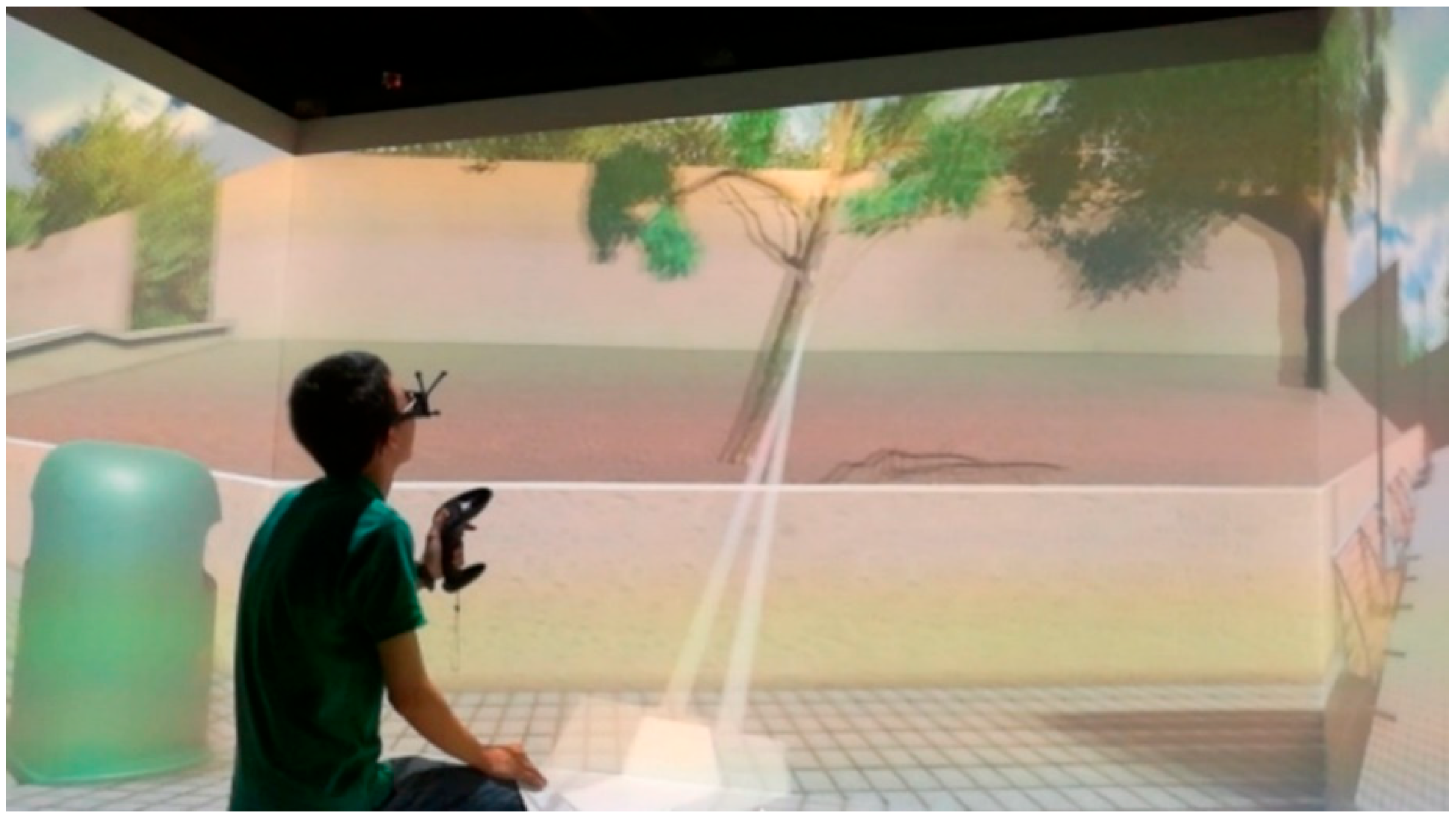
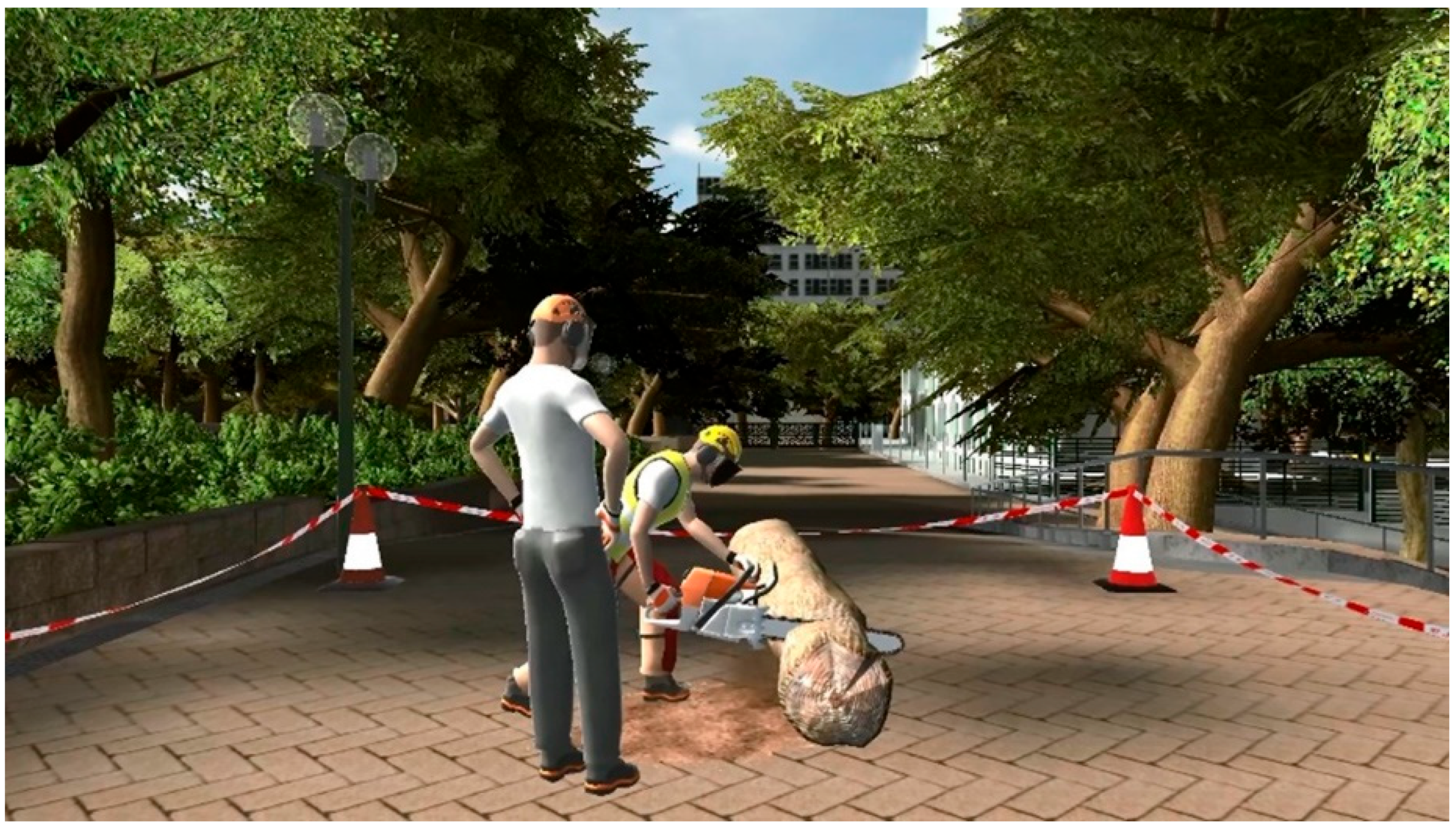
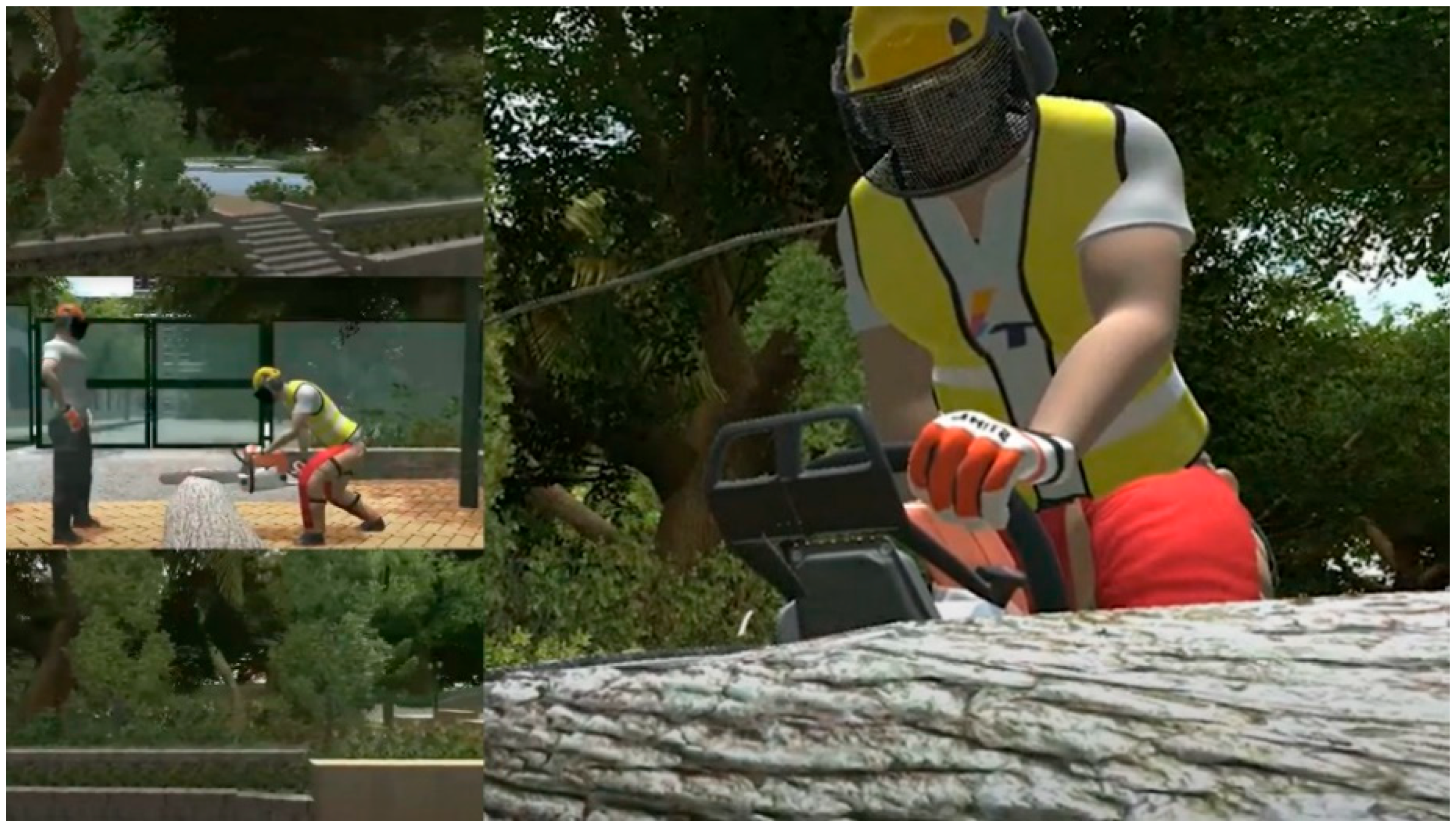
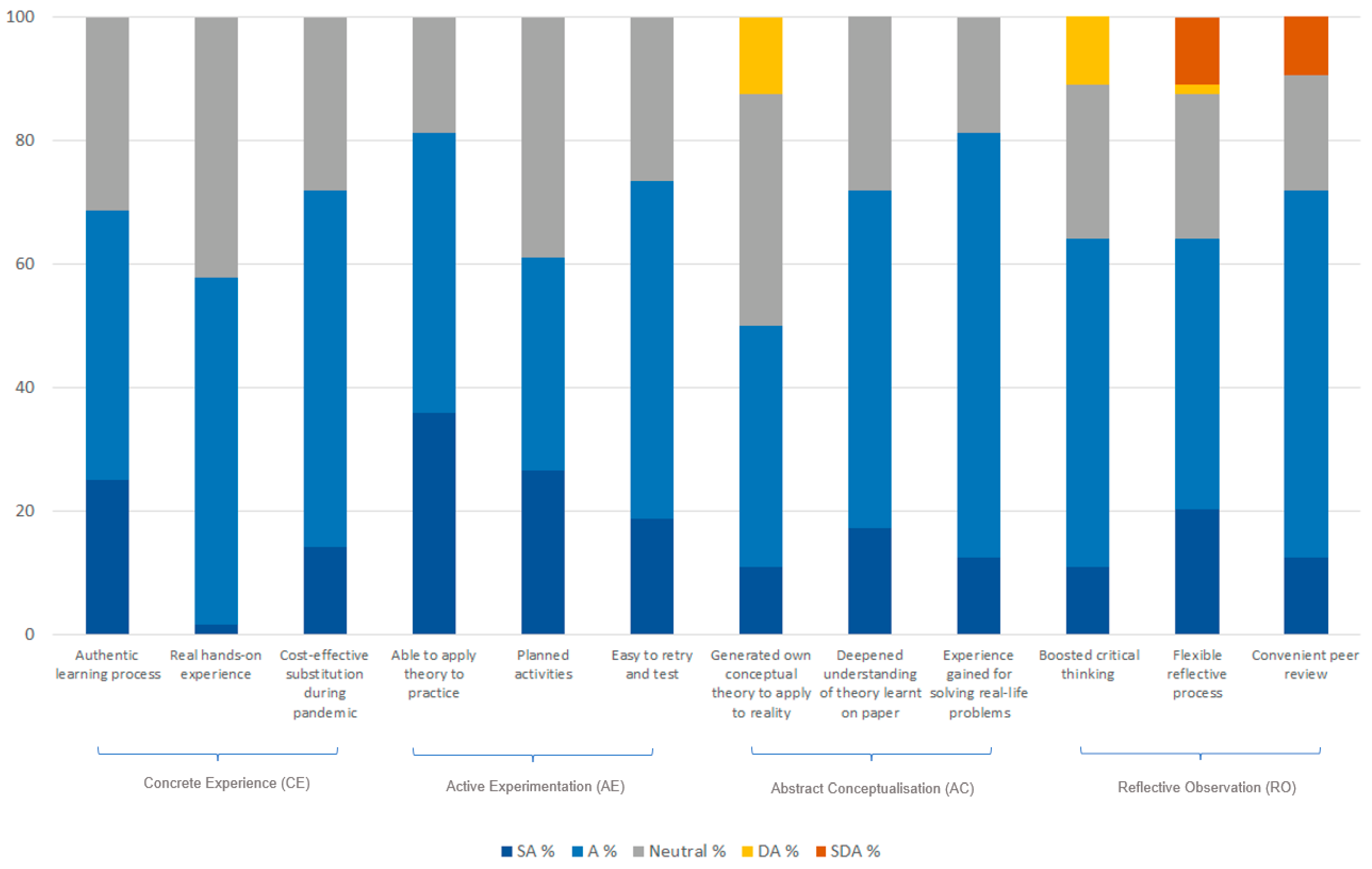
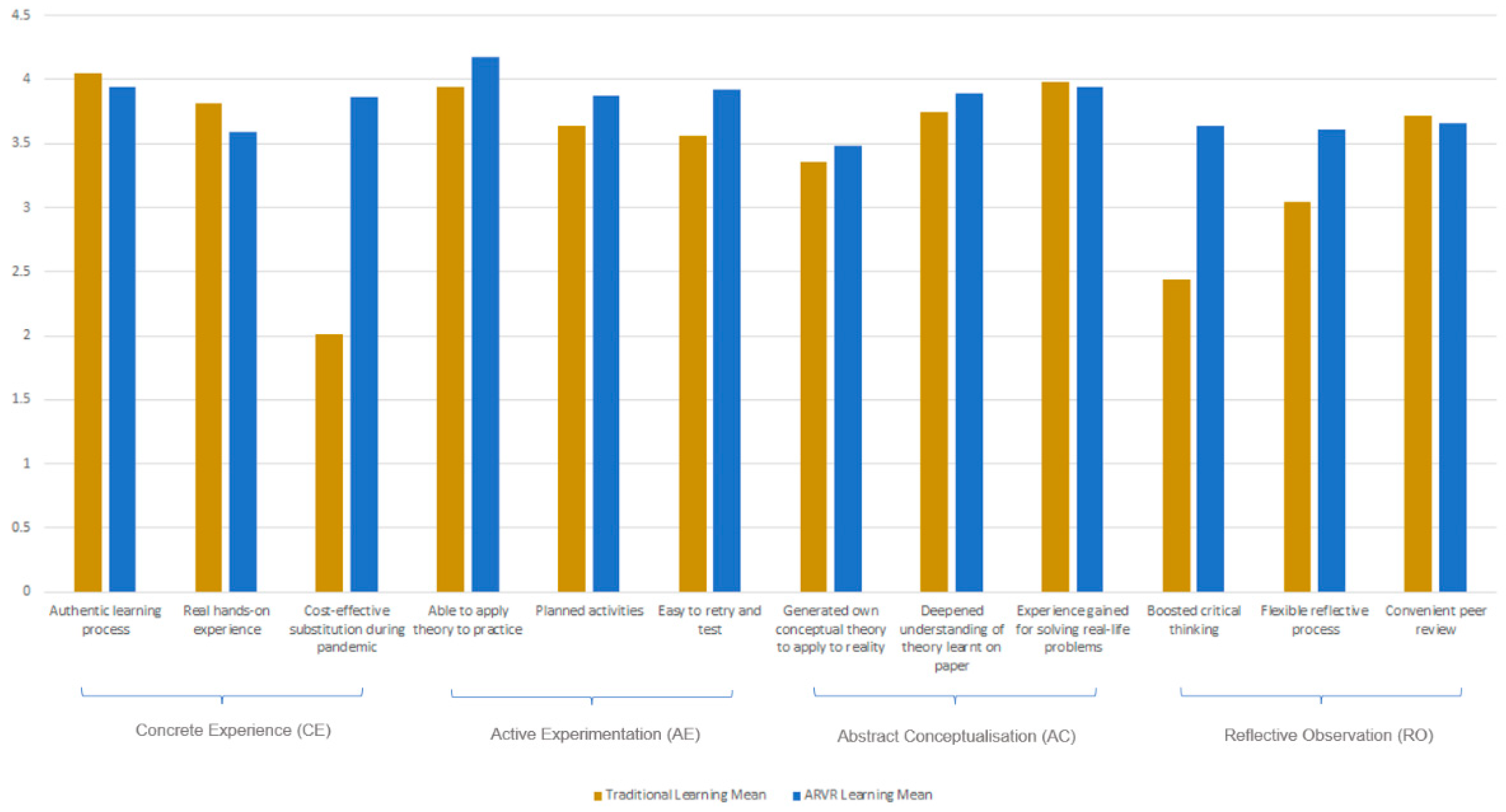
| Course Components | Learning Tasks and Activities | Approach |
|---|---|---|
| Theoretical foundations |
| Individual-based online lectures and in-class exercises |
| Experiential activities |
| Hybrid team-based inquiry learning |
| Critical reflections |
|
| Stage/Attributes | SA% | A% | Neutral% | DA% | SDA% |
|---|---|---|---|---|---|
| Concrete Experience (CE) | |||||
| Authentic learning process | 25.00 | 43.75 | 31.25 | 0.00 | 0.00 |
| Real hands-on experience | 1.56 | 56.25 | 42.19 | 0.00 | 0.00 |
| Cost-effective substitution during pandemic | 14.06 | 57.81 | 28.13 | 0.00 | 0.00 |
| Active Experimentation (AE) | |||||
| Able to apply theory to practice | 35.94 | 45.31 | 18.75 | 0.00 | 0.00 |
| Planned activities | 26.56 | 34.38 | 39.06 | 0.00 | 0.00 |
| Easy to retry and test | 18.75 | 54.69 | 26.56 | 0.00 | 0.00 |
| Abstract Conceptualisation (AC) | |||||
| Generated own conceptual theory to apply to reality | 10.94 | 39.06 | 37.50 | 12.50 | 0.00 |
| Deepened understanding of theory learnt on paper | 17.19 | 54.69 | 28.13 | 0.00 | 0.00 |
| Experience gained for solving real-life problems | 12.50 | 68.75 | 18.75 | 0.00 | 0.00 |
| Reflective Observation (RO) | |||||
| Boosted critical thinking | 10.94 | 53.13 | 25.00 | 10.94 | 0.00 |
| Flexible reflective process | 20.31 | 43.75 | 23.44 | 1.56 | 10.94 |
| Convenient peer review | 12.50 | 59.38 | 18.75 | 0.00 | 9.38 |
| Stage/Attributes | Traditional Learning | ARVR Learning | All | Range | |||
|---|---|---|---|---|---|---|---|
| Mean | S.D. | Mean | S.D. | Mean | S.D. | ||
| Concrete Experience (CE) | |||||||
| Authentic learning process | 4.0469 | 0.8248 | 3.9375 | 0.7533 | 3.9922 | 0.7887 | 1–5 |
| Real hands-on experience | 3.8125 | 0.9739 | 3.5938 | 0.5261 | 3.7031 | 0.7873 | 1–5 |
| Cost-effective substitution during pandemic | 2.0156 | 0.9676 | 3.8594 | 0.6391 | 2.9375 | 1.2344 | 1–5 |
| Active Experimentation (AE) | |||||||
| Able to apply theory to practice | 3.9375 | 0.7741 | 4.1719 | 0.7249 | 4.0547 | 0.7562 | 1–5 |
| Planned activities | 3.6406 | 0.5154 | 3.8750 | 0.8067 | 3.7578 | 0.6844 | 1–5 |
| Easy to retry and test | 3.5625 | 1.0216 | 3.9219 | 0.6739 | 3.7422 | 0.8806 | 1–5 |
| Abstract Conceptualisation (AC) | |||||||
| Generated own conceptual theory to apply to reality | 3.3594 | 0.7636 | 3.4844 | 0.8543 | 3.4219 | 0.8095 | 1–5 |
| Deepened understanding of theory learnt on paper | 3.7500 | 0.6667 | 3.8906 | 0.6695 | 3.8203 | 0.6692 | 1–5 |
| Experience gained for solving real-life problems | 3.9844 | 0.6783 | 3.9375 | 0.5599 | 3.9609 | 0.6199 | 1–5 |
| Reflective Observation (RO) | |||||||
| Boosted critical thinking | 2.4375 | 0.8333 | 3.6406 | 0.8236 | 3.0391 | 1.0226 | 1–5 |
| Flexible reflective process | 3.0469 | 1.2141 | 3.6094 | 1.1632 | 3.3281 | 1.2174 | 1–5 |
| Convenient peer review | 3.7188 | 0.7008 | 3.6563 | 1.0269 | 3.6875 | 0.8762 | 1–5 |
| Participation | |||||||
| Participant of ARVR learning | 0 | 0 | 1 | 1 | 0.5 | 0.502 | 0–1 |
| Stage/Attributes | Coefficient | Std. Error | Adjusted R2 | F-Statistic |
|---|---|---|---|---|
| Concrete Experience (CE) | ||||
| Authentic learning process | −0.1094 | 0.1396 | −0.0031 | 0.6136 |
| Real hands-on experience | −0.2188 | 0.1384 | 0.0117 | 2.4996 |
| Cost-effective substitution during pandemic | 1.8438 *** | 0.1450 | 0.5587 | 161.7875 |
| Active Experimentation (AE) | ||||
| Able to apply theory to practice | 0.2343 * | 0.1326 | 0.0165 | 3.1257 |
| Planned activities | 0.2344 ** | 0.1197 | 0.0218 | 3.8363 |
| Easy to retry and test | 0.3594 * | 0.1530 | 0.0344 | 5.5186 |
| Abstract Conceptualisation (AC) | ||||
| Generated own conceptual theory to apply to reality | 0.1250 | 0.1432 | −0.0019 | 0.7616 |
| Deepened understanding of theory learnt on paper | 0.1406 | 0.1181 | 0.0033 | 1.4179 |
| Experience gained for solving real-life problems | −0.0469 | 0.1099 | −0.0065 | 0.1818 |
| Reflective Observation (RO) | ||||
| Boosted critical thinking | 1.2031 *** | 0.1465 | 0.3436 | 67.4846 |
| Flexible reflective process | 0.5625 *** | 0.2102 | 0.0463 | 7.1634 |
| Convenient peer review | −0.0625 | 0.1554 | −0.0066 | 0.1617 |
Publisher’s Note: MDPI stays neutral with regard to jurisdictional claims in published maps and institutional affiliations. |
© 2022 by the authors. Licensee MDPI, Basel, Switzerland. This article is an open access article distributed under the terms and conditions of the Creative Commons Attribution (CC BY) license (https://creativecommons.org/licenses/by/4.0/).
Share and Cite
Kee, T.; Zhang, H. Digital Experiential Learning for Sustainable Horticulture and Landscape Management Education. Sustainability 2022, 14, 9116. https://doi.org/10.3390/su14159116
Kee T, Zhang H. Digital Experiential Learning for Sustainable Horticulture and Landscape Management Education. Sustainability. 2022; 14(15):9116. https://doi.org/10.3390/su14159116
Chicago/Turabian StyleKee, Tris, and Hao Zhang. 2022. "Digital Experiential Learning for Sustainable Horticulture and Landscape Management Education" Sustainability 14, no. 15: 9116. https://doi.org/10.3390/su14159116
APA StyleKee, T., & Zhang, H. (2022). Digital Experiential Learning for Sustainable Horticulture and Landscape Management Education. Sustainability, 14(15), 9116. https://doi.org/10.3390/su14159116







